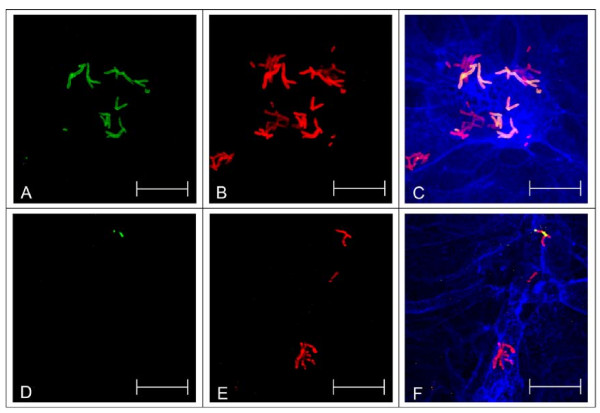Figure 3.
Detection of intracellular C. diphtheriae in Detroit562 cells by immune-fluorescence microscopy. D562 cells were seeded on coverslips 48 h prior to infection and infected with C. diphtheriae (DSM43989 tox+, all others are non-toxigenic) for 4 h with at a MOI of 200 as described earlier [26]. Antibodies directed against the surface proteome of C. diphtheriae were used as primary, Alexa Fluor 488 goat anti-rabbit IgGs and Alexa-Fluor 568 goat anti-rabbit IgGs as secondary antibodies (A, D: intact D562, B, E: permeabilized D562, C, F: overlay with blue F-actin stain Phalloidin-Alexa-Fluor 647, A-C: ISS3319, D-F: ISS4060. Green stain in panels A and D indicate extracellular bacteria. Dark red stain in panels B and E indicates internalized C. diphtheriae, while adherent bacteria appear in light red. In the overlay (C, F) extracellular C. diphtheriae appear orange, while internalized bacteria are stained dark red. Scale bars: 20 μm.

